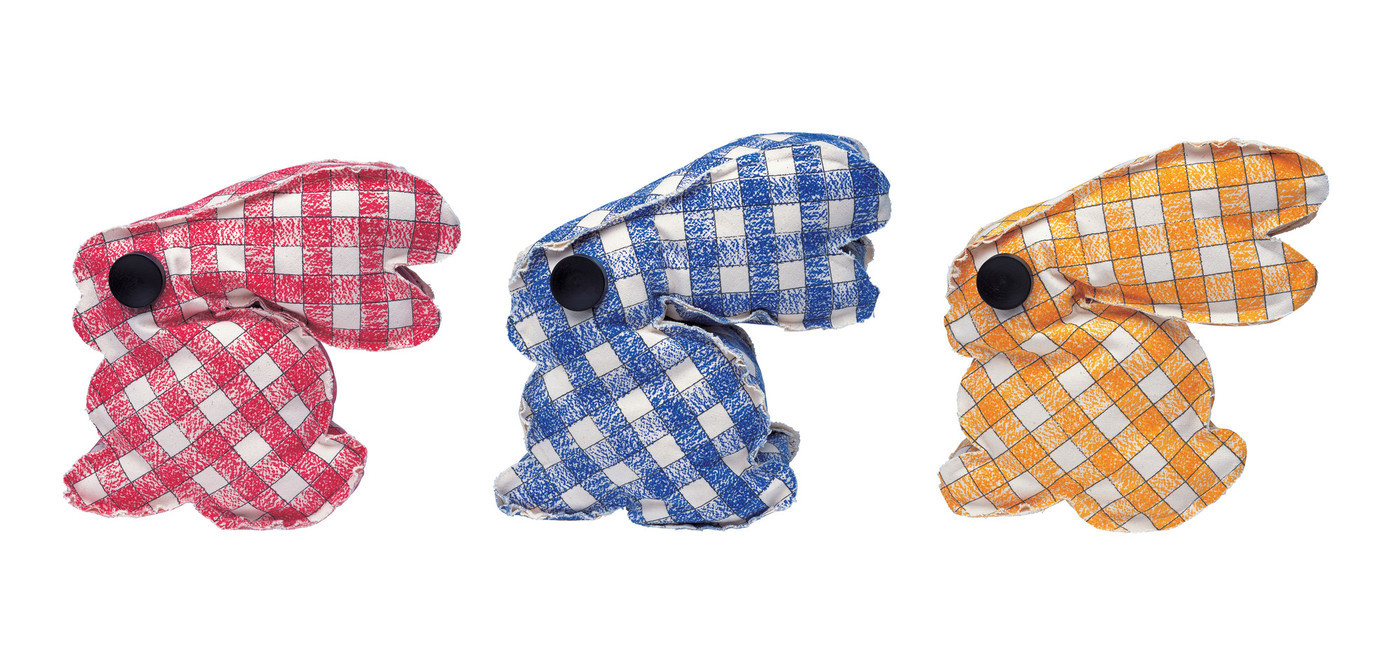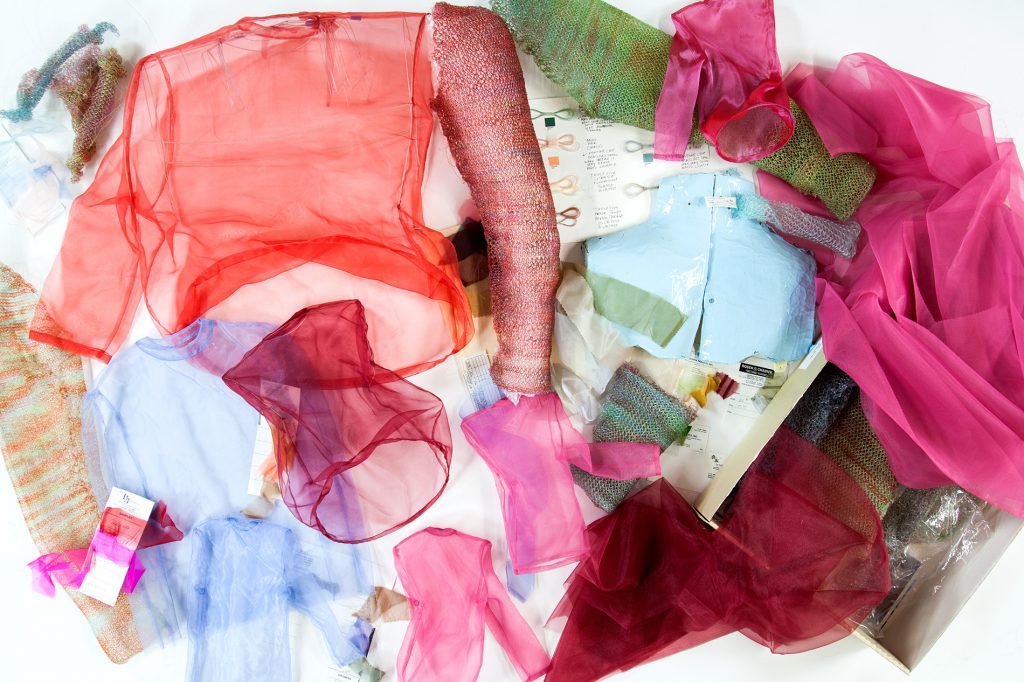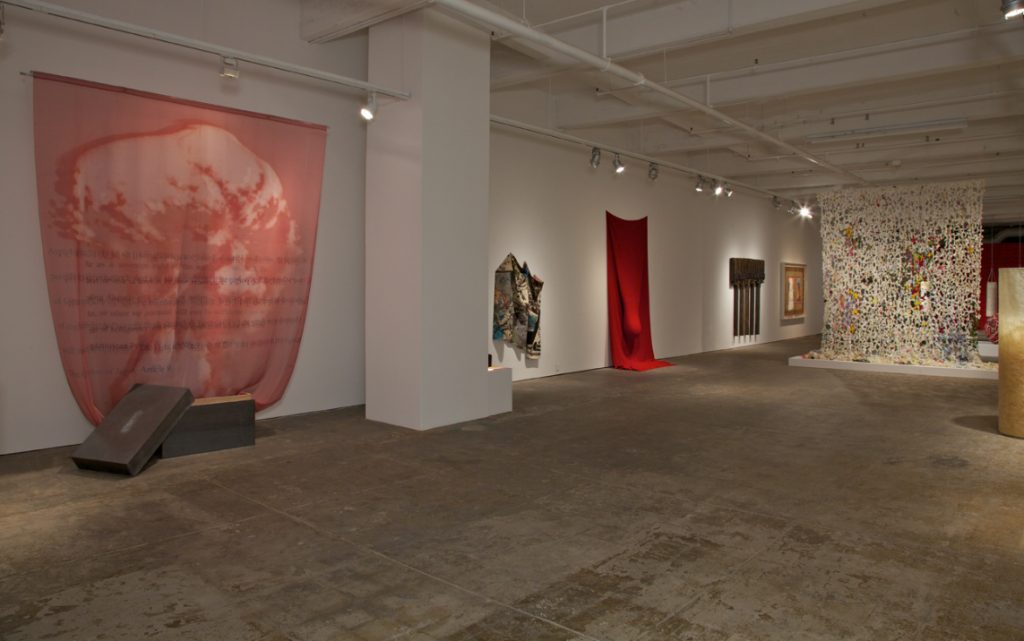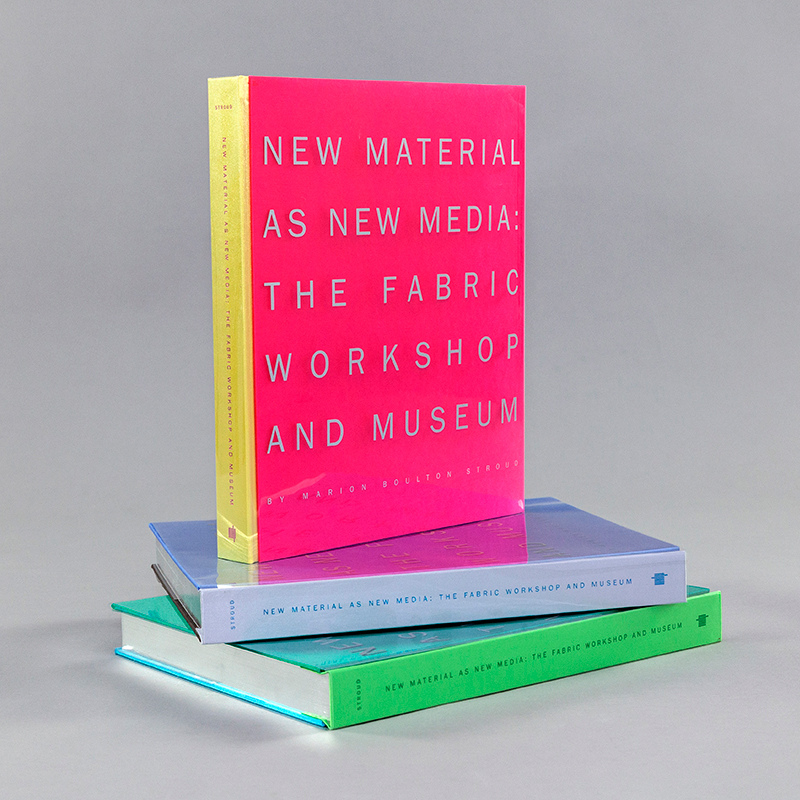Created in 1997, Calico Bunny is reminiscent of Claes Oldenburg’s seminal soft sculpture work and “happenings” of the 1960s. For these experimental theatrical performances, Oldenburg created large objects made of fabric and filled with foam. Often mundane and familiar objects (light switches or toilets, for example), these fabric objects were exaggerated in some way to accentuate their ordinariness and their place in our consumer culture.
Calico Bunny looks like a benign child’s toy, with the subtle exception of the protruding black wooden eye, intentionally oversized compared to the scale of the bunny. The eye, which flops uneasily forward, and the slightly understuffed body, contribute to the image of this bunny as tossed aside or abandoned. The bunnies are made from a classic calico pattern, silkscreen printed on canvas, and designed based on a simple bunny cookie cutter. They are meant to be viewed individually, in small groups, or as one large mass of proliferating bunnies.
Oldenburg created Calico Bunny as a limited edition multiple of 99 bunnies in red, yellow, and blue—33 of each colorway. They were originally made to benefit Doctors of the World/Médecins du Monde, an international not-for-profit organization that provides medical support to developing nations or countries in crisis.



